88 F. maximum temperature Thursday in the Twin Cities.
79 F. average high on June 15.
77 F. high on June 15, 2016.
June 16, 1992:
A total of 27 tornadoes touch down across Minnesota, the second most in
Minnesota history. The communities of Chandler, Lake Wilson, Clarkfield
and Cokato are badly damaged. 80 million dollars worth of damage would
occur, and Presidential disaster declarations would be made for many
counties.
June 16, 1989: Frost develops across Minnesota with crops destroyed on high ground in southeast Minnesota. Preston got down to 32.
Not Tornado Alley, But Tornado Cul de Sac?Much
of the movie "Twister" was filmed in Iowa, because Oklahoma was in a
drought, and wilted/brown didn't look so great on film. When you think
tornadoes you think southern Plains, for good reason. That's ground
zero. But Minnesota sees its fair share of spin-ups; an average of 36
tornadoes every year.
25 years ago today a total of 27 tornadoes
touched down on Minnesota, including the F-5 monster that slammed
Chandler, the last F-5 to hit the state.
7 years ago tomorrow a
swarm of 48 tornadoes strafed Minnesota; 3 of them violent EF-4. That
was the year Wadena was hit. We've been lucky in recent years, but as we
all know, at some point your luck runs out.
It pays to stay a little paranoid, and never let your guard down.
Dynamics
required for severe (damaging) storms should remain south of Minnesota,
but cool air aloft keeps showers and T-showers in the forecast later
today and Saturday. By Sunday a stiff northwest wind confines
temperatures to the 60s.
We warm up next week but models show the
core of blast- furnace heat staying to our south into July, with
frequent bursts of fresh air here at home. Whew...
June 17, 2010 Albert Lea mesocyclone photo courtesy of meteorologist Aaron Shaffer.
When In Doubt - Predict Rain.
Unless you live in the southwestern USA, where the forecast calls for a
free sauna with potentially dangerous levels of heat into next week.
Rain tapers across the Pacific Northwest, but heavy shower and storms
linger across New England and the Mid Atlantic today. Strong to severe
storms flare up Saturday across the Ohio Valley and Great Lakes as
cooler air drains out of Canada. 84-hour Future Radar: NOAA NAM and
Tropicaltidbits.com.
Friday Severe Risk.
The best chance of damaging storms later today comes from near Omaha to
Des Moines, but storms may exceed severe criteria (58 mph+ winds and/or
1" diameter hail) from Kansas City to Sioux Falls, South Dakota,
according to NOAA SPC.
Cool Correction Coming.
Today and much of Saturday will still feel like June, but you may
notice a faint whiff of October in the air Sunday and Monday as
temperatures hold in the 50s and 60s. Sweet relief, while much of
America fries. ECMWF forecast for the Twin Cities: WeatherBell.
Heat Wave Builds.
Looking out 2 weeks the 500 mb pattern suggests a lengthy, potentially
severe heat wave taking hold for much of the USA with 90s, even 100s
from the southwest into the southern Plains. The only relief will come
from the Pacific Northwest and northern tier states into New England,
where Canadian air will take the edge off the worst of the heat with
occasional cool frontal passages.
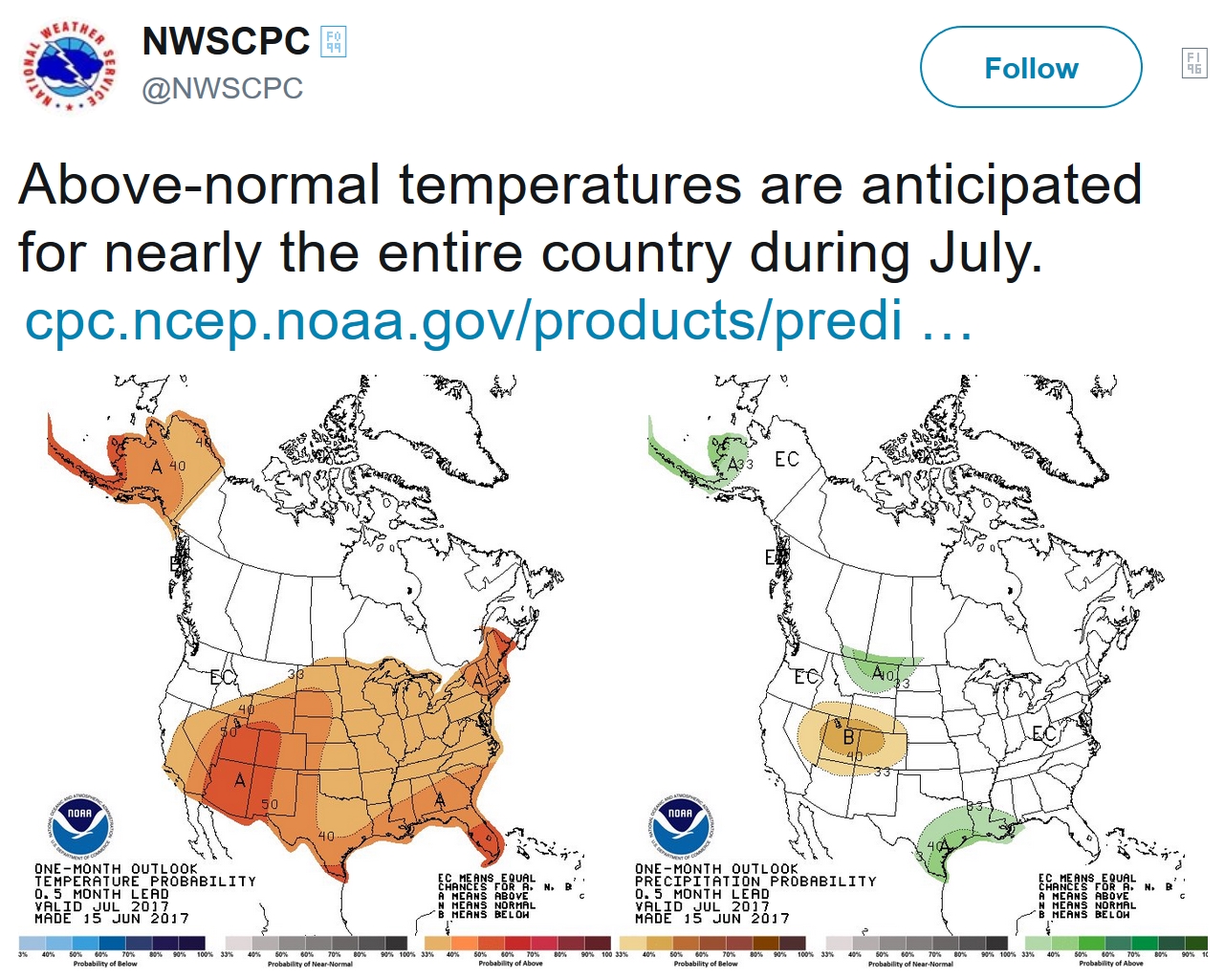 Warmer Than Average July For Most of USA?
Warmer Than Average July For Most of USA? Here is the latest prediction from
NOAA CPC, the Climate Prediction Center, calling for a very warm July (with the possible exception of the Pacific Northwest).
An Opportunity for Storm-Resistant Infrastructure.
A recent fusillade of storms, hail and high water was a vivid reminder
that we need to keep the lights on, no matter what Mother Nature throws
at us. Every threat is an opportunity for disruption and reinvention. As
we talk about infrastructure, why wouldn't we try to make everything we
do more storm-resilient, flood-proof and drought-tolerant? I'm still
waiting for 3M (or grad students in a garage) to invent and market
hail-proof film I can stick on my car. Hail-resistant singles? Basements
that don't flood? Road surfaces, pipes and culverts that can better
handle 21st century downpours? Crops less susceptible to drought (and
standing water)? Someone is going to invent this stuff - it should be
cooked up right here at home.
 8 Tips for Shooting an Award-Winning Tornado Photo
8 Tips for Shooting an Award-Winning Tornado Photo. National Geographic photographer Jim Reed has some good advice at PetaPixel: "
I’ve been photographing extreme weather for 25 years. After publishing tips on how to photograph lightning here back in March, I was asked to share any tips I have in capturing an award-winning tornado image. So, here I go…
Note to reader:
Storm chasing and extreme weather photography, as discussed in this
article, can be very dangerous. Any person should approach these
activities with caution and appropriate supervision and training.
Tip 1: Study Your Subject and Risks
Adopting a ‘safety first’ policy is critical when storm chasing. To start, I recommend reading The Basics of Tornadoes on the Storm Prediction Center website.
In my experience, storm chasing risks fall somewhere between climbing
Mount Everest and shopping at Wal-Mart on Black Friday. Veteran storm
chaser Chuck Doswell has an excellent article titled “Storm Chasing with Safety, Courtesy and Responsibility....”
Earth is Not in the Midst of a Sixth Mass Extinction? A matter of debate and perspective; here's an excerpt from
The Atlantic: "...
So
things don’t look so good, no matter where we look. Yes, the victims in
the animal world include scary apex predators that pose obvious threats
to humans, like lions, whose numbers have dropped from 1 million at the
time of Jesus to 450,000 in the 1940s to 20,000 today—a decline of 98
percent. But also included have been unexpected victims, like
butterflies and moths, which have declined in abundance by 35 percent
since the 1970s. Like all extinction events, so far this one has been
phased and complex, spanning tens of thousands of years and starting
when our kind left Africa. Other mass extinctions buried deep in earth’s
history have similarly played out over tens of thousands, even hundreds
of thousands of years..." (File image:
NASA / Reuters).
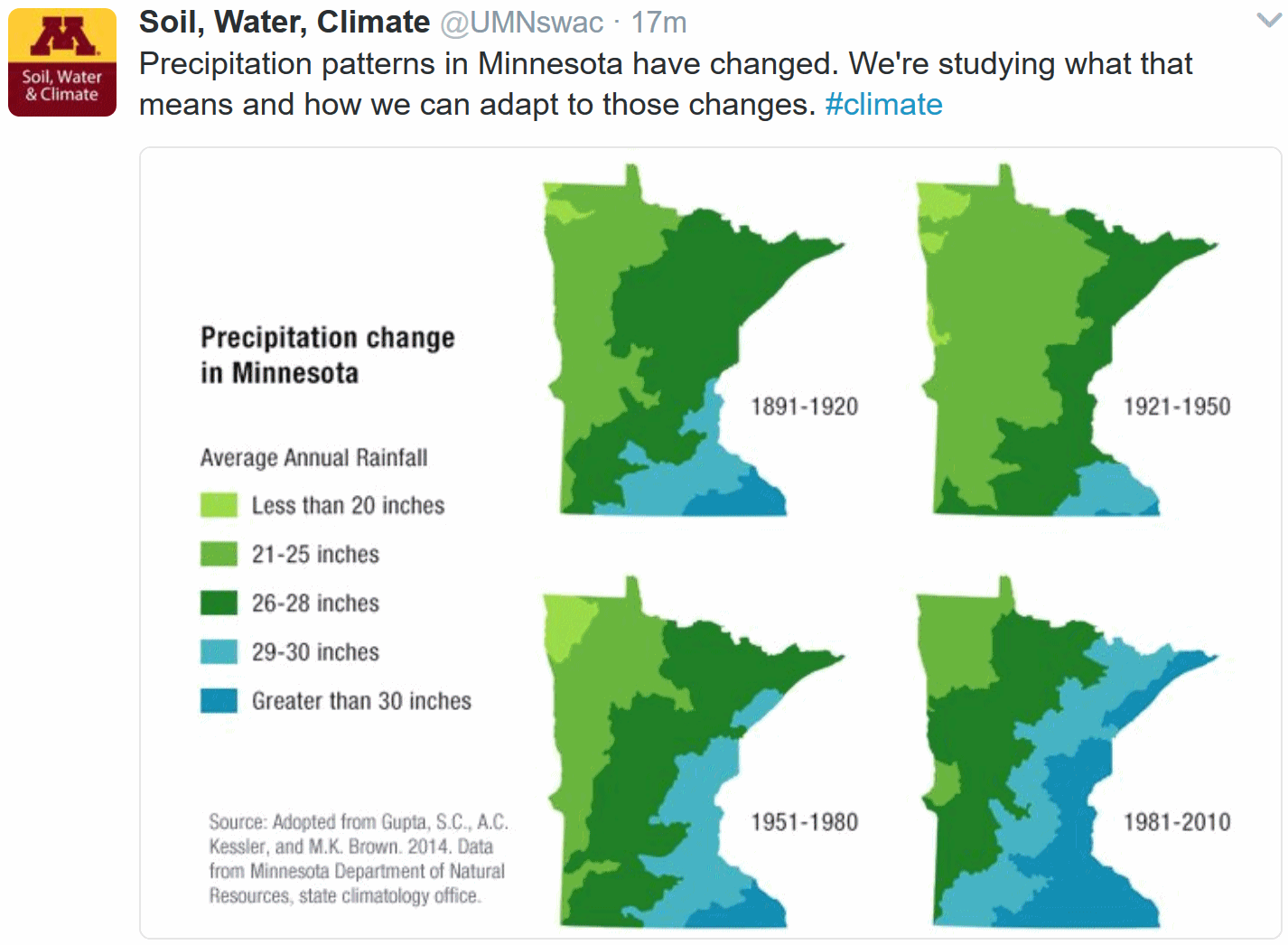 NASA Data Suggest Future May Be Rainier Than Expected
NASA Data Suggest Future May Be Rainier Than Expected. Details from
NASA: "..
.Su's
team found that most of the climate models underestimated the rate of
increase in precipitation for each degree of surface warming that has
occurred in recent decades. The models that came closest to matching
observations of clouds in the present-day climate showed a greater
precipitation increase for the future than the other models. Su said
that by tracing the underestimation problem back to the models'
deficiencies in representing tropical high clouds and the atmospheric
general circulation, "This study provides a pathway for improving
predictions of future precipitation change..."

President Trump Chats on Phone with Tangier Mayor.
Delmarva Now has details: "...
According
to Eskridge, the president also addressed the issue of sea-level rise
as it affects Tangier. "He said not to worry about sea-level
rise," Eskridge said. "He said, 'Your island has been there for hundreds
of years, and I believe your island will be there for hundreds more.' "
The island in the middle of the Chesapeake Bay is a Republican
stronghold — about 87 percent of residents voted for Trump in the
November 2016 election. Still, erosion is among the islanders' main
concerns, Eskridge said in an interview last November with the
Chesapeake Bay Foundation. The island, population about 450, is losing
up to 16 feet of land a year, scientists say. Islanders have been
advocating for years for construction of a seawall to protect their
home; a smaller project — a jetty to protect the harbor's west entrance —
is in the works and should come about in the near future..."
Asia's Rivers Send More Plastic Into The Ocean Than All Other Continents Combined.
Quartz reports: "
Every year, millions of tonnes of plastics are produced and trashed, with some ending up in the sea, and gobbled up by tiny fish.
Even though countries don’t report on how much plastic they are
flushing, a recent study suggests that around 86% of the plastic running
through rivers was coming from a single continent—Asia. An estimated
1.15 to 2.41 million tonnes (1.27 to 2.66 million metric tons) of
plastic waste enters rivers every year, around one-fifth of the total plastic in the sea from coastal populations worldwide, according to a study published in Nature on June 7..."
Photo credit: "
Heading out."
(EPA/Sebastiao Moreira)
World Coal Production Just Had Its Biggest Drop on Record. Bloomberg Markets reports: "
It’s the end of an era for coal. Production of the fossil fuel dropped by a record amount in 2016, according to BP Plc’s
annual review of global energy trends. China, the world’s biggest
energy consumer, burned the least coal in six years and use dropped in
the U.S to a level last seen in the 1970s, the company’s data show.
Coal, the most polluting fuel that was once the world’s fastest growing
energy source, has been a target of countries and companies alike as the
world begins to work toward the goals of the Paris climate agreement.
Consumption is falling as the world’s biggest energy companies promote
cleaner-burning natural gas, China’s economy evolves to focus more on
services than heavy manufacturing and renewable energy like wind and
solar becomes cheaper..."
Renewables Provided a Record 10% of U.S. Power in March.
Bloomberg Markets has details: "
Wind
and solar energy accounted for more than 10 percent of U.S. power
generation for the first time in March following a record year for clean
energy development. Wind farms in Texas, Oklahoma and elsewhere
accounted for 8 percent of electric generation, while residential and
commercial solar installations provided about 2 percent, the U.S. Energy Information Administration said in a statement Wednesday..."
Will Replacing Human Drivers With Self-Driving Cars Be Safer? Fortune
speculates (as much as I can't see myself giving up on driving anytime
soon - I suspect the experts are right). Our grandkids won't think twice
about taking a driverless (electric) vehicle to work, ride-sharing
along the way: "
U.S. cities will look a lot different in 20 years,
at least when it comes to public transportation. That’s according to
Bryan Salesky, the CEO of the self-driving car company Argo AI, which
became a Ford Motor subsidiary after the auto giant said in February it would invest
$1 billion in the startup. The rise of self-driving cars will usher a
“much safer mode of transportation” by “removing the human from the
loop,” Salesky said on Wednesday at the Rutberg FM technology conference
in Half Moon Bay, Calif. Human drivers are more prone to distractions
and errors in their judgment compared to autonomous cars in the future,
Salesky believes..."
Image credit: BMW and
Business Insider.
U.S. Power Plant Emissions Fall To Near 1990 Levels, Decoupling From GDP Growth. More cause for cautious optimism in a post at
InsideClimate News: "...
A report released
Wednesday by the consulting firm M.J. Bradley & Associates finds
that climate-warming carbon dioxide emissions from the country's power
generators declined between 2005 and 2015 as the companies shifted away
from coal and toward renewable energy sources and natural gas.
Preliminary data from 2016 suggests that emissions dropped further last
year, putting them at or near the same level they were in 1990.
Meanwhile, the report notes, gross domestic product (GDP) has grown
steadily over the same period. "The decoupling of economic growth from
emissions growth is really encouraging," said Dan Bakal, director of
electric power for Boston-based sustainability advocacy group, Ceres,
which sponsored the study. "You can achieve these reductions while
growing the economy, and trying to reverse these trends would be an
uphill battle..."
At Xcel Energy, We'll Stay on a Clean Energy Path. My thanks to Xcel Chairman and CEO Ben Fowke for brightening my day; here's an excerpt of an Op-Ed at
Star Tribune: "...
Power
companies like Xcel Energy are leading the way toward a clean energy
future. As an industry, electric utilities already have reduced carbon
emissions by 25 percent since 2005. The Paris agreement would have
required a reduction of 26 to 28 percent by 2025. Our industry is
reducing carbon emissions and doing so 10 years in advance of
international agreements. All CEOs are proud of their companies, and I
am no exception. Last year, Xcel Energy achieved a 30-percent reduction
in carbon emissions, and we are on track to reduce our emissions by 45
percent by 2021 companywide. Our reductions are the result of remarkable
changes in how we produce energy. Back in 2005, 9 percent of our energy
came from renewable sources. In 2016 it was 25 percent, and by 2021 we
project it will be more than 40 percent..."
Photo credit: "
Xcel Energy's renewable energy sources include the 100-megawatt North Star Solar project near North Branch, Minn." Brian Peterson - Star Tribune file.
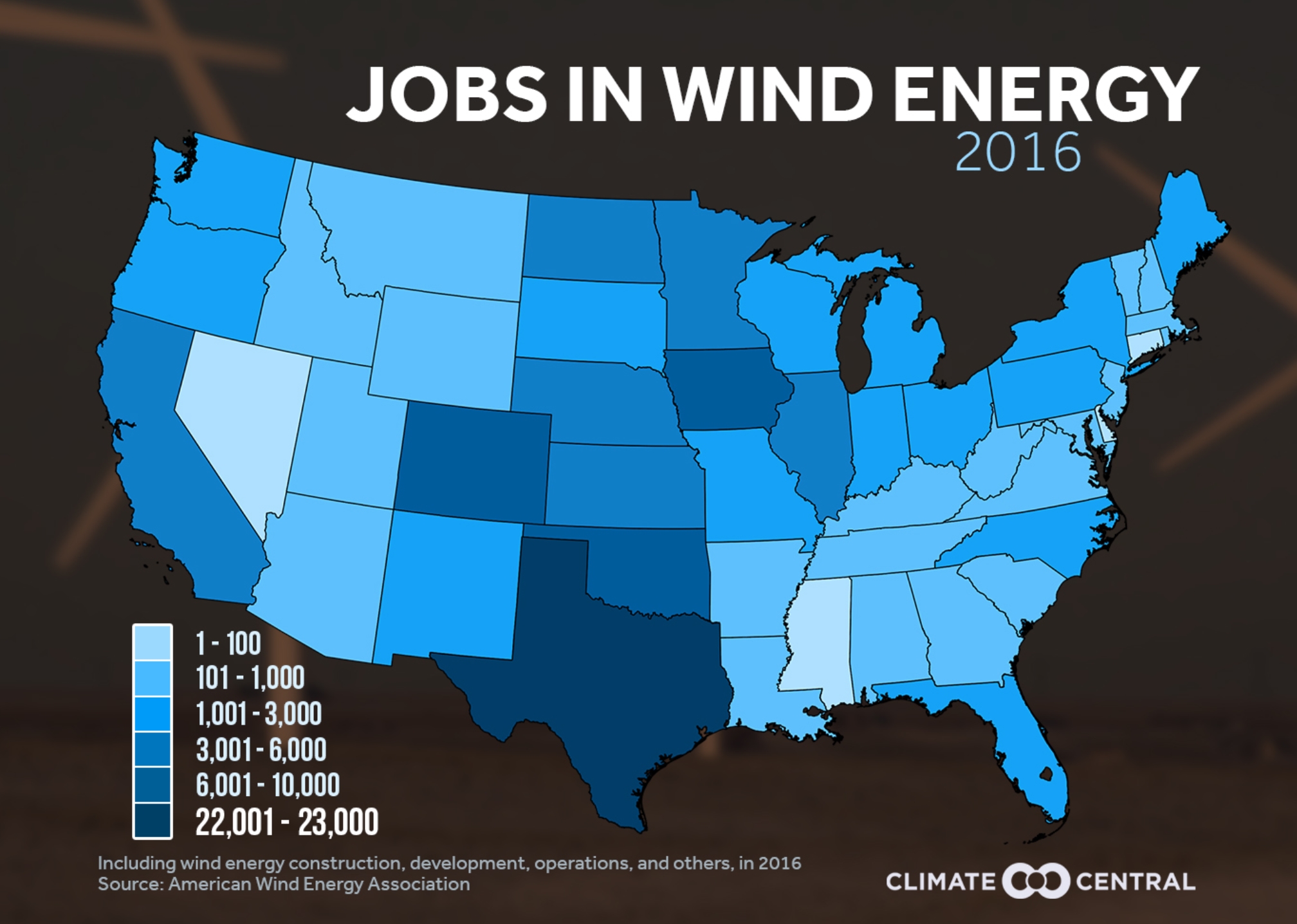
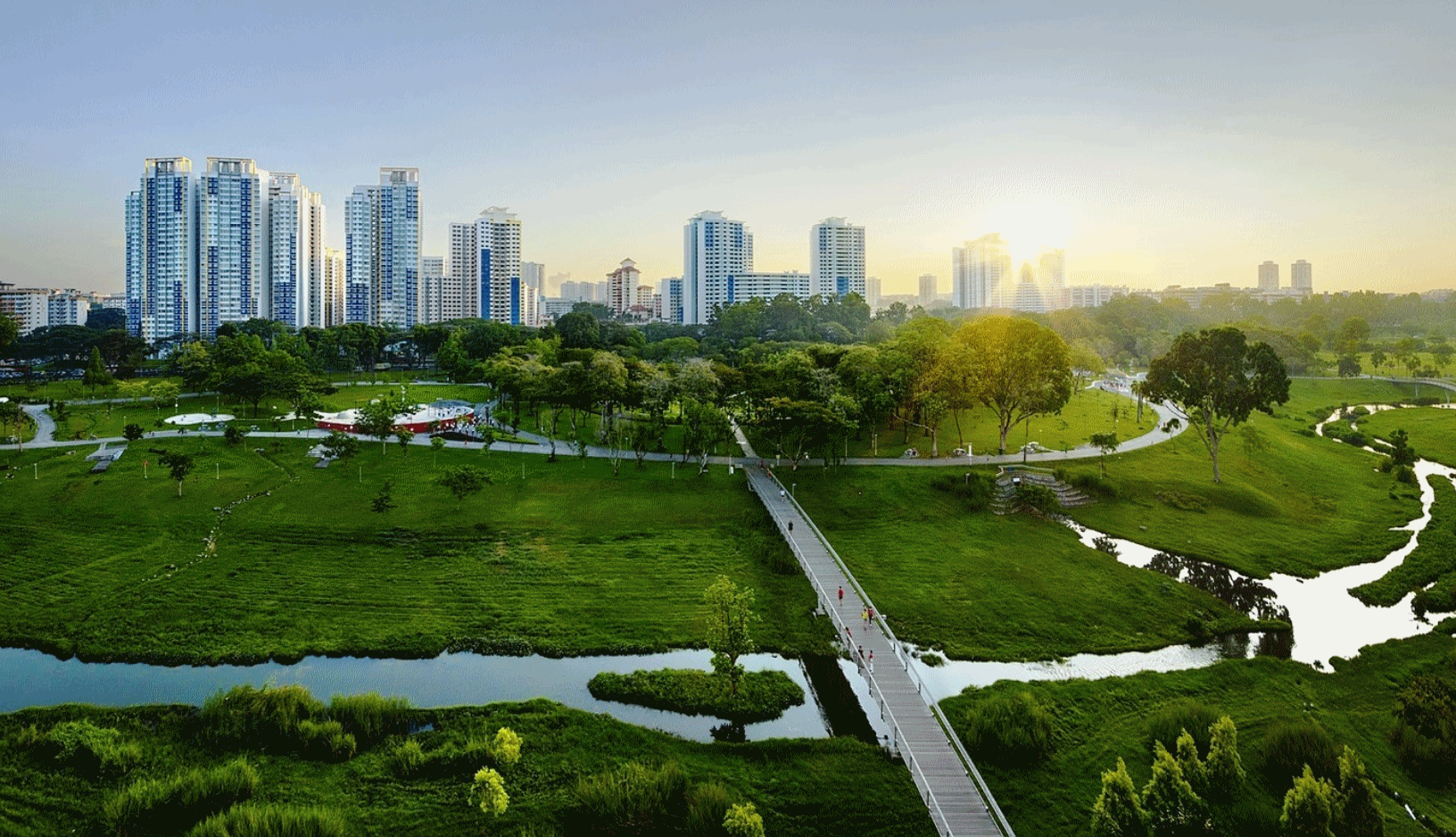 U.S. Cities Don't Need the Paris Accord to Fight Climate Change. Fortune Magazine has the Op-Ed, here's an excerpt: "...Cities
can incorporate alternative fuel vehicles into municipal fleets. Within
Texas, they have made widely varying progress along this line. Whereas
Dallas Area Rapid Transit has converted most of its buses to use cleaner
compressed natural gas, Houston’s fleet is dominated by diesel buses,
although it unveiled its first electric bus late last year. By comparison, in China, the city of Shenzhen has more than 10 million residents and will feature an entirely electric bus fleet
by the end of this year. This is one area where American cities can and
should improve dramatically. Cities can also reduce emissions by
helping residents pay for rooftop solar installations or other energy
efficiency improvements, and expanding bike lanes to make zero-carbon
commuting more viable. It is promising that U.S. cities are stepping up
to the plate, but city leaders need to carefully plan the policies they
enact
U.S. Cities Don't Need the Paris Accord to Fight Climate Change. Fortune Magazine has the Op-Ed, here's an excerpt: "...Cities
can incorporate alternative fuel vehicles into municipal fleets. Within
Texas, they have made widely varying progress along this line. Whereas
Dallas Area Rapid Transit has converted most of its buses to use cleaner
compressed natural gas, Houston’s fleet is dominated by diesel buses,
although it unveiled its first electric bus late last year. By comparison, in China, the city of Shenzhen has more than 10 million residents and will feature an entirely electric bus fleet
by the end of this year. This is one area where American cities can and
should improve dramatically. Cities can also reduce emissions by
helping residents pay for rooftop solar installations or other energy
efficiency improvements, and expanding bike lanes to make zero-carbon
commuting more viable. It is promising that U.S. cities are stepping up
to the plate, but city leaders need to carefully plan the policies they
enact..."
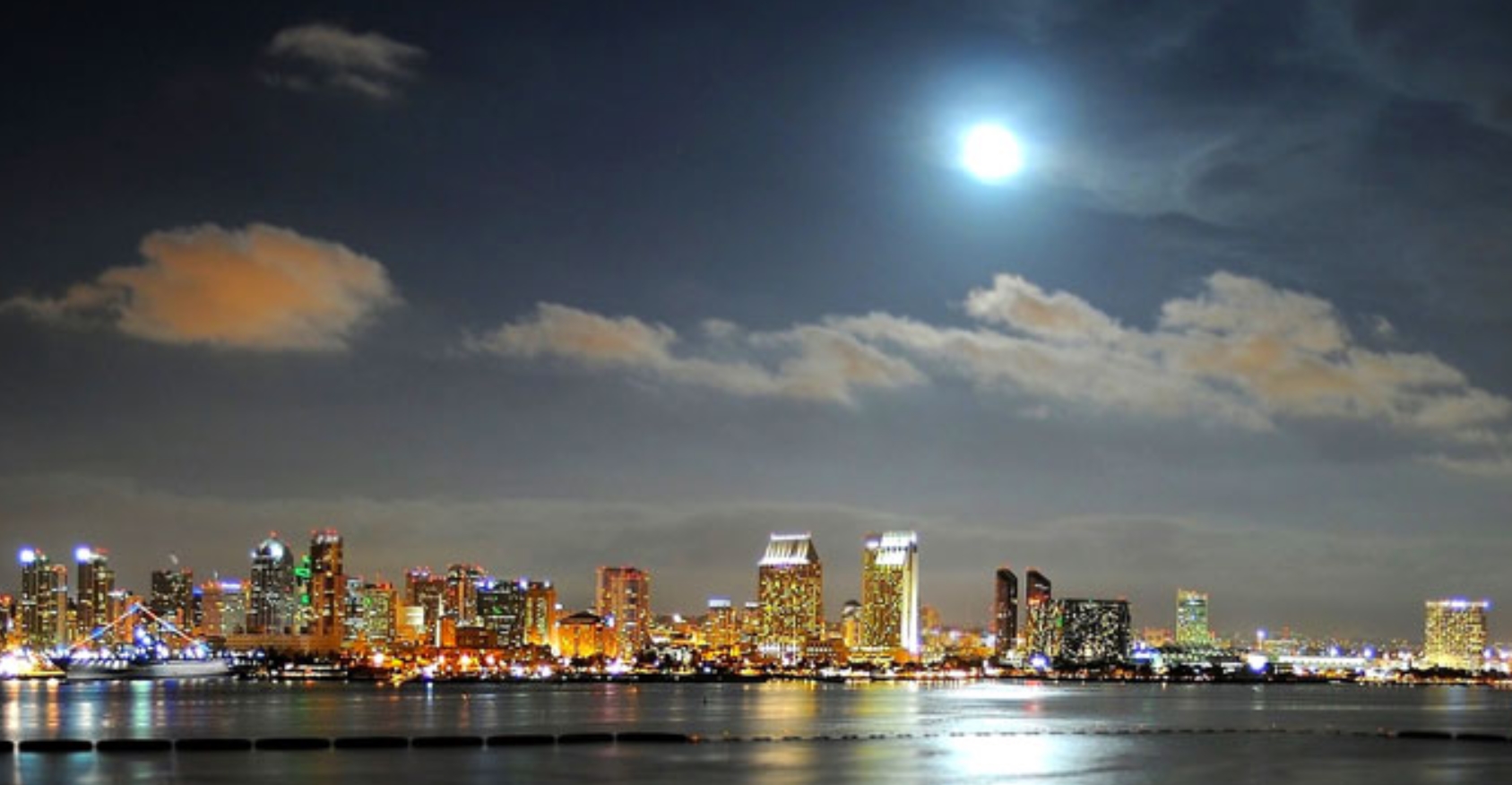 San Diego Commits To 100% Clean Energy
San Diego Commits To 100% Clean Energy.
Yale Climate Connections has a video and story: "
San
Diego recently became one of the largest cities in the country to
commit to the goal of 100 percent clean electricity city-wide. It’s just
one part of a climate action plan that aims to cut the entire city’s
global warming pollution over the next 18 years to half its 2010 levels.
The plan also sets targets to electrify all city vehicles, divert waste
from landfills, reduce water use, and increase the use of bikes and
mass transit. It’s a big goal. Hooven: “The fun part of announcing it is
over. Now we just need to put our heads down and get to work.” That’s
Cody Hooven, chief sustainability officer for the city..."
Cable News Wars: Inside the Unprecedented Battle for Viewers in Trump Era. Variety explains the new level of stress and insanity at CNN, Fox News and MSNBC: "...In
this fraught atmosphere, it’s no surprise that combined viewing of the
Big Three cable-news networks — Fox News Channel, CNN and MSNBC — is up
33% through the first week of June compared with the same period last
year, according to data from Pivotal Research Group analyst Brian
Wieser. In this endless cycle of breaking political headlines,
television news is facing its biggest moment of opportunity since Fox
News Channel and MSNBC came on the scene 21 years ago. The competitive
fervor among the Big Three to turn these added eyeballs into regular
viewers is further stoked by the fact that the longtime market leader —
Fox News — is vulnerable after a year of turmoil on both sides of the
camera. Staffs are being pushed to the brink..."
Image credit: Alex Fine for Variety.
Sweden's Museum of Failure Highlights Products That Have Flopped. If you're not failing it might mean that you're not really trying. Here's an excerpt from
The Washington Post: "
Green
Heinz ketchup? Fat-free Pringles? Colgate frozen lasagna? You don’t
need to be an expert to know these products weren’t successful. Which is
why these creations, with dozens of others, feature in the new Museum of Failure,
a wacky parade of rejected products from years gone by set up in the
Swedish town of Helsingborg. It’s the brainchild of 43-year-old curator
and clinical psychologist Samuel West. The idea came to him while on
vacation, and he quickly purchased the Internet domain name. West later
realized he had accidentally misspelled “museum” — a sure sign the
project would succeed..."
Photo credit: "
Samuel
West, curator of the Museum of Failure, holds a bottle of Heinz ‘Green
Sauce’ ketchup at the Museum of Failure in Helsingborg, Sweden. West has
put together a collection of failed products that also includes
Fat-Free Pringles potato chips and a frozen lasagna by toothpaste maker
Colgate." (James Brooks/AP).
 Hong Kong Parking Spot Sells for Record $664,300. Good grief, a new record for wretched excess? Bloomberg reports: "Hong
Kong just set another property-price record. This time, it was for a
parking space. A 188-square-foot space on Hong Kong island sold for
HK$5.18 million ($664,300), or HK$27,500 a square foot, last month,
newspaper Ming Pao reported Wednesday, citing land registration records.
The car park cost more than some Hong Kong homes: Centaline Property
data shows a HK$4.2 million sale of a 284-square-foot, two-bedroom home
in Sha Tin, in the New Territories, in April.
Hong Kong Parking Spot Sells for Record $664,300. Good grief, a new record for wretched excess? Bloomberg reports: "Hong
Kong just set another property-price record. This time, it was for a
parking space. A 188-square-foot space on Hong Kong island sold for
HK$5.18 million ($664,300), or HK$27,500 a square foot, last month,
newspaper Ming Pao reported Wednesday, citing land registration records.
The car park cost more than some Hong Kong homes: Centaline Property
data shows a HK$4.2 million sale of a 284-square-foot, two-bedroom home
in Sha Tin, in the New Territories, in April..."
Photo credit: Trip Advisor.
KFC Launches Chicken Sandwich Into Space Next Week. You just can't make this stuff up.
HuffPo has the tasty details: "
It’s
one small step for a chicken sandwich, and one giant leap for fast
food. On June 21, KFC plans to launch its Zinger chicken sandwich into a
space via a high-altitude solar-powered balloon known as a “stratollite,” a word combining “stratosphere” and “satellite.”
The chicken sandwich will zip up to about 28.5 miles above Earth ― not
quite the 62-mile threshold to be considered to be the edge of space,
but, as the New York Times notes, it's cheaper than shooting off an
orbiting rocket..."
7% of Americans Believe Chocolate Milk Comes From Brown Cows. Wait, you mean it doesn't? Here's a head-shaking clip from
The Washington Post: "
Seven
percent of all American adults believe that chocolate milk comes from
brown cows, according to a nationally representative online survey
commissioned by the Innovation Center of U.S. Dairy. If you do the math,
that works out to 16.4 million misinformed, milk-drinking people. The
equivalent of the population of Pennsylvania (and then some!) does not
know that chocolate milk is milk, cocoa and sugar..."
Photo credit: "
“Pumpkin,” a 7-month-old Guernsey cow who does not produce chocolate milk." (The Washington Post).
TODAY: Warm sun, late T-storm possible. Winds: SW 5-10. High: 86
FRIDAY NIGHT: Few T-storms around. Low: 64
SATURDAY: Numerous showers, few T-storms. Winds: W 8-13. High: near 80
SUNDAY: What June? Mostly cloudy, windy and showery. Winds: NW 10-20. Wake-up: 58. High: 69
MONDAY: Mix of clouds and sun, refreshing. Winds: NW 10-15. Wake-up: 55. High: 73
TUESDAY: Some sun, risk of a shower. Winds: NW 10-15. Wake-up: 56. High: 72
WEDNESDAY: Clouds increase, stray T-shower. Winds: SE 8-13. Wake-up: 58. High: 78
THURSDAY: Sticky sun, a few strong T-storms? Winds: S 10-15. Wake-up: 64. High: 86
Climate Stories...
Water and U.S. National Security. People
can live without a lot of things, but water isn't one of them. You
think mass migrations are overwhelming now? Give it a few years. Here's a
post at War Room, at the
United States Army War College: "...
Fresh
water has long been a vital and necessary natural resource, and it has
long been a source of tension, a military tool, and a target during war.
The links between water and conflict have been the subject of extensive
analysis for several decades, beginning with the development of the literature on “environmental security” and water conflicts in the late 1980s and early 1990s. In coming years, new factors, including rising populations, industrial and agricultural demand for water, human-induced climate change,
and political uncertainties make it increasingly urgent that solutions
to water tensions be found and implemented. The failure to address water
problems through diplomacy will lead to new and growing security risks,
including for the U.S. The U.S. and its allies must develop and employ a
wide variety of instruments to reduce instability and the risk of
conflict related to growing water problems, before military intervention
is needed..."
Climate Change in Schools Where It's "Fake News". Turns out in many school districts the kids should be teaching the teachers, at least when it comes to climate science.
CNN.com reports: "...
Although
97% of climate scientists agree that global warming is linked to the
burning of fossil fuels, a majority of middle and high school teachers
are not aware of this consensus. Many of these teachers teach climate
change as if it were an ongoing debate within the scientific community.
This disconnect between scientists and educators was captured in a recent survey
(PDF) by the National Center for Science Education, a nonprofit that
works to promote science over ideology. "Our survey found that
relatively few teachers had even a college course that devoted as much
as a single class to climate change," said Glenn Branch, the center's
deputy director, who notes that many teachers present misinformation
about climate change or avoid teaching it entirely..."
File image: Shutterstock.

Delray (Florida) To Put Climate Change at Forefront: "The Waters Are Coming". Here's an excerpt from
PalmBeachPost.com: "...
Miami
Beach will soon embark on an ambitious $100 million project to raise
roads, install pumps and water mains and redo sewer connections to
combat flooding, according to the Miami Herald.
That could be in store for Delray Beach a decade down the line,
commissioners said. The effects of rising tides are already presenting
themselves in Delray Beach, according to city staff. Delray’s Marina
Historic District along the Intracoastal Waterway sees damaging floods during high tides.
And the city’s freshwater aquifers have already experienced saltwater
intrusion that will require action within a year, said John Morgan, who
heads the city’s environmental services department. The city is planning
both long-term and immediate actions to adapt to global climate change..."
File photo: Lynne Sladky, AP.
The Dutch Have Solutions to Rising Seas. The World is Watching. It's both a threat - and an opportunity. Here's an excerpt from
The New York Times: "...
Mr.
Ovink is the country's globe-trotting salesman in chief for Dutch
expertise on rising wawter and climate change. Like cheese in France or
cars in Germany, climate change is a business in the Netherlands. Month
in, month out, delegations fromm as far away as Jakarta, Ho Chi Minh
City, New York and New Orleans make the rounds in the port city of
Rotterdam. They often end up hiring Dutch firms, which dominate the
global market in high-tech engineering and water management..."
Photo credit: Josh Haner.
Climate Change Pushing Tropical Diseases Toward Arctic. Here's an excerpt from
National Geographic: "...
It's no secret that climate change can spread illnesses such as West Nile virus, Zika, and malaria,
as rising temperatures push disease-carrying mosquitoes into new
places, from the highlands of Ethiopia to the United States. But warm
temperatures and shifting weather patterns work in subtle ways, too.
Changes in precipitation, wind, or heat are shifting the threat posed by
other human illnesses, from cholera to a rare freshwater brain-eating amoeba to rodent-driven infections like hantavirus. And the importance of all these changes are only growing more significant. "Probably almost everybody is going to feel this at some point in their life," says Stanley Maloy,
a microbiologist and dean of the College of Sciences at San Diego State
University. "It may be transmission of a mosquito-borne disease in a
place it didn't used to be. It may be a simple case of salmonella. But it's going to affect us all..."
Photo credit: "
Bathers
on the Baltic have recently been confronted with a new threat:
dangerous disease that is normally only found in warm water." Priit
Vesilind, National Geographic Creative.
Growing Concern Over Climate Change is Creating Interfaith Dialogue. Pacific Standard reports: "...
In
the U.S., dozens of seminaries—mostly Protestant—are integrating
environmental education into their theological training. A younger and
bigger generation of clergy is being urged to ramp up the urgency in
their parishes for local and governmental climate action. But the hope
and promise of Laudato Si could remain beyond human reach without even
more aggressive and engaged faith leaders mobilizing the billions they
represent in all corners of the globe to pressure their governmental
leaders and to act on their own. "My students are excited and they want
to take this on, but the challenges are so big," said Tim Van Meter, an
associate professor of ecology and justice at the Methodist Theological
School in Ohio. "People are just tired. It seems inevitable that we will
drive ourselves to collapse..."
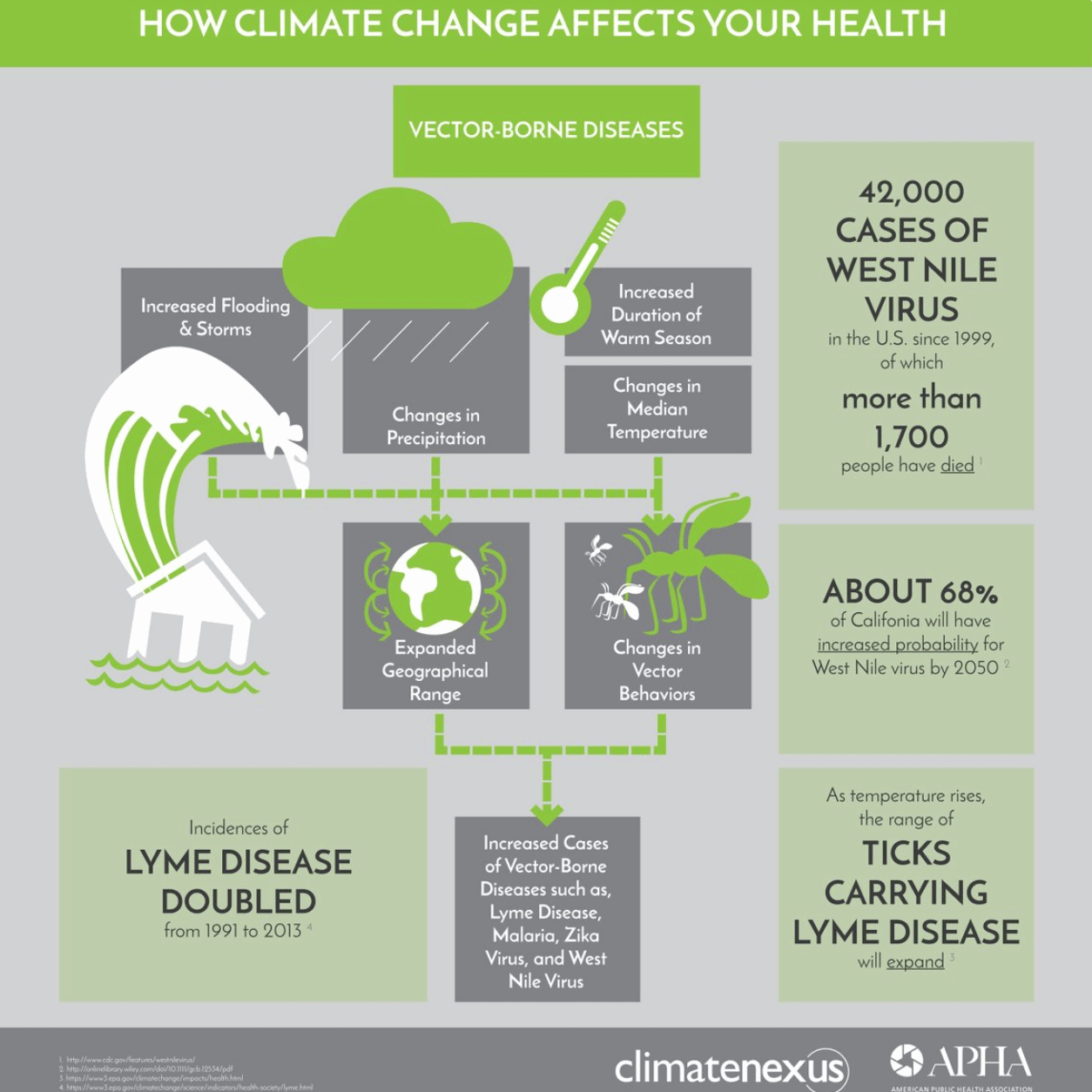 POV: A Doctor's Prescription for Climate Change
POV: A Doctor's Prescription for Climate Change. Here's a snippet of an Op-Ed at
The Palm Beach Post: "...Florida’s rise in the heat index is the highest of any state each year and will continue, according to a Na
tional
Climate Assessment report by a team of more than 300 experts guided by a
60-member federal advisory committee. These heat waves are particularly
dangerous to seniors, those with chronic medical conditions, outdoor
laborers, and the poor. Doctors like me see increased cardiorespiratory
problems, such as chronic obstructive pulmonary disease (COPD) attacks.
There will be more asthma attacks from reduced air quality and increased
carbon pollution, and more heart attacks from already choked arteries
made worse by heat stress, according to the Florida Department of
Health. Newer or re-emerging infections such as Zika, chikungunya and
dengue, spread by mosquitoes, will continue..."
 How Retiring Nuclear Power Plants May Undercut U.S. Climate Goals
How Retiring Nuclear Power Plants May Undercut U.S. Climate Goals.
The expression that comes to mind is "pick your poison". Keep nuclear
plants going and try to address concerns with radioactive fuel storage,
or risk an uptick in CO2 emissions from burning more natural gas and
coal?
The New York Times reports: "
Over
the last decade, a glut of cheap natural gas from hydraulic fracturing
has driven hundreds of dirtier coal plants in the United States out of
business, a big reason carbon dioxide emissions fell 14 percent from
2005 to 2016. But more recently, that same gas boom has started pushing
many of America's nuclear reactors into early retirement - a trend with
adverse consequences for climate change. The United States' fleet of 99
nuclear reactors still supplies one-fifth of the country's electricity
without generation any planet-warming greenhouse gases. When those
reactors retire, wind and solar usually cannot expland fast enough to
replace the lost power. Instead, coal and natural gas fill the void,
causing emissions to rise..."
Photo credit: "
The
Three Mile Island nuclear power plant in Middletown, PA. Exelon has said
it will shut down the last reactor there by 2019 unless it receives
financial assistance." Jonathan Ernst, Reuters.



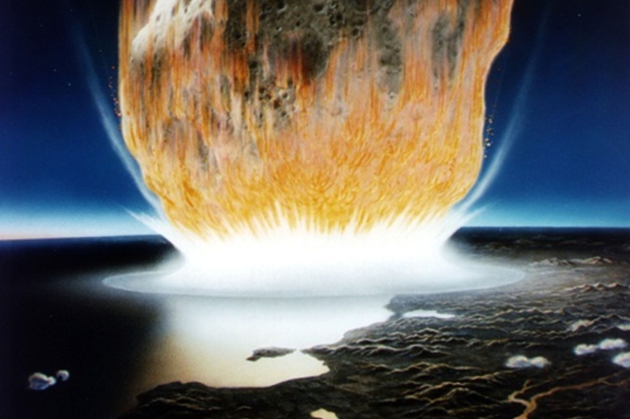
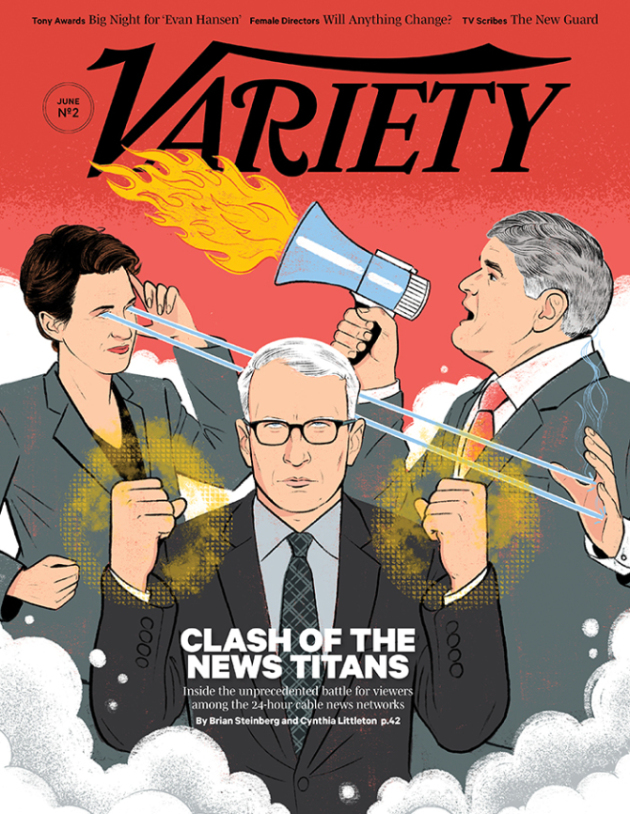
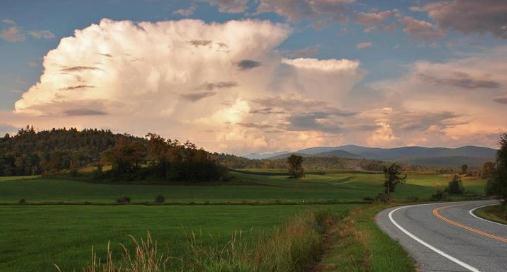




No comments:
Post a Comment